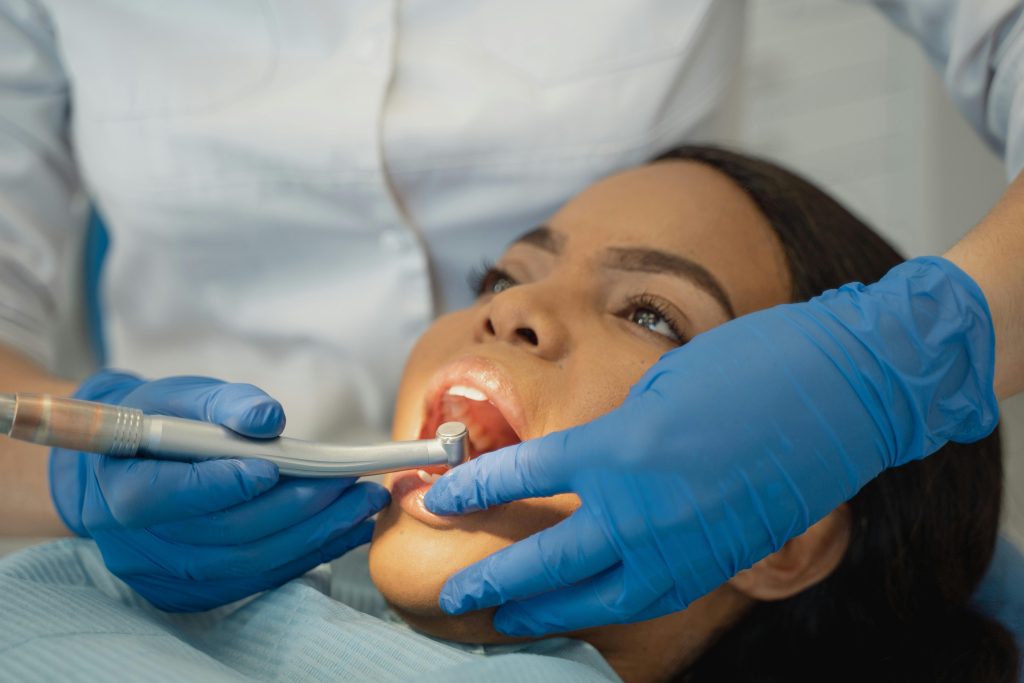
The realm of dental implants stands as a pinnacle of modern dental care, bridging the gap between health and aesthetic satisfaction. However, the success of these procedures hinges significantly on maintaining impeccable sterility in dental implant clinics, emphasizing the importance of strict hygiene protocols, making it imperative to visit Temecula Center for Wisdom Teeth & Dental Implants site for the highest standard of care. This article delves into best practices for ensuring a sterile environment, crucial not just for patient safety but also for the integrity of the procedure itself.
1. Rigorous Sterilization Protocols, The Heart of Dental Clinic Hygiene
Sterilization in dental clinics is not just a requirement; it’s a sacred practice. Every instrument used in dental implant procedures must undergo a stringent sterilization process, following clear protocols such as autoclaving, which is the gold standard for eliminating bacteria, viruses, and other pathogens. Instruments should be individually packaged and opened only at the time of use to prevent any contamination.
Fun Fact:
Did you know that autoclaves in dental clinics operate at temperatures around 121 to 134 degrees Celsius, effectively annihilating even the most resilient microbes?
2. Immaculate Clinic Environment
Maintaining an immaculate clinic environment extends beyond just clean surfaces. It involves a comprehensive approach to cleanliness. This includes regular disinfection of all surfaces, especially those frequently touched like door handles and dental chairs. Air filtration systems should be in place to ensure a dust-free and pathogen-limited environment, crucial for implant surgery success.
3. Rigorous Hand Hygiene as The First Line of Defense
Hand hygiene forms the first line of defense against the spread of infection. Dental practitioners must adhere to strict handwashing protocols before and after each patient interaction. The use of gloves does not negate the need for hand hygiene; rather, it complements it. Gloves should be changed between patients and after touching any non-sterile surface.
Interesting Fact:
The average handwashing time recommended by health organizations is about 20 seconds, roughly the time it takes to hum the “Happy Birthday” song twice!
4. Use of Personal Protective Equipment (PPE)
PPE is vital in the battle against infections. This includes masks, gloves, eye protection, and gowns. These protective gears safeguard both the patient and the dental professional from potential contaminants. The proper disposal of PPE is equally important to prevent cross-contamination.
5. Sterile Storage Solutions
How instruments are stored post-sterilization is as important as the sterilization process itself. Sterile instruments should be stored in a dry, contamination-free environment. The use of UV cabinets for storing sterilized equipment is gaining popularity, offering an additional
layer of protection against microbial invasion.
Did You Know?
UV cabinets not only store but can continuously disinfect tools, using ultraviolet light to eliminate any lingering pathogens.
6. Regular Staff Training and Audits
Continuous staff training is crucial in a field that constantly evolves. Regular training sessions ensure that all team members are updated on the latest sterilization techniques and protocols, such as those highlighted on http://www.cleanervibe.com/, fostering a culture of excellence and safety within the dental clinic. Additionally, periodic audits of sterilization processes help in identifying any lapses and provide opportunities for improvement.
7. Patient Education and Communication
Educating patients about the measures taken to ensure sterility can significantly enhance their confidence in the procedure. Clear communication about the sterilization processes reassures patients about their safety, making them more comfortable during their treatment.
Fun Fact:
A survey found that patients who are well-informed about sterilization practices in their dental clinic tend to have higher levels of satisfaction and trust in their healthcare providers.
8. Advanced Sterilization Technologies
The dental industry is witnessing rapid advancements in sterilization technology. From plasma sterilizers to chemical vapor sterilizers, these new-age devices offer more efficient and quicker sterilization solutions, ensuring an even safer environment for dental implant procedures.
9. Compliance with Global Standards
Compliance with international standards like those set by the Centers for Disease Control and Prevention (CDC) and World Health Organization (WHO) is not just mandatory but a benchmark of quality. Clinics adhering to these guidelines are often at the forefront of patient safety and care excellence.
The sanctity of sterility in dental implant clinics is a cornerstone of patient safety and procedural success. By adhering to these best practices, dental clinics can assure their patients of the highest standards of care. Remember, a sterile clinic is not just a requirement; it’s a commitment to excellence and patient well-being.
The field of dental implantology has grown exponentially, with millions of procedures performed annually worldwide, highlighting the importance of sterility in these clinics more than ever before.



